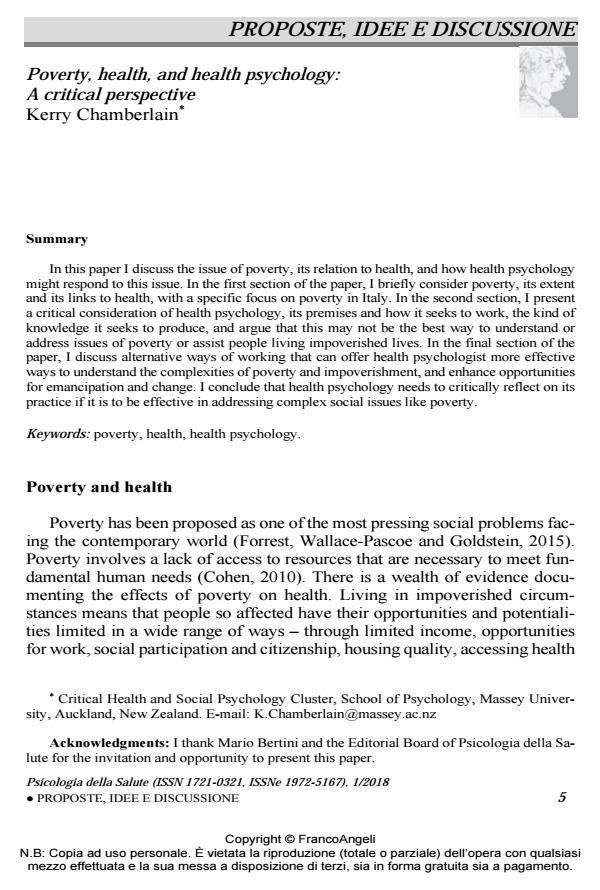Poverty, health, and health psychology: A critical perspective
Titolo Rivista PSICOLOGIA DELLA SALUTE
Autori/Curatori Kerry Chamberlain
Anno di pubblicazione 2018 Fascicolo 2018/1
Lingua Inglese Numero pagine 14 P. 5-18 Dimensione file 217 KB
DOI 10.3280/PDS2018-001001
Il DOI è il codice a barre della proprietà intellettuale: per saperne di più
clicca qui
Qui sotto puoi vedere in anteprima la prima pagina di questo articolo.
Se questo articolo ti interessa, lo puoi acquistare (e scaricare in formato pdf) seguendo le facili indicazioni per acquistare il download credit. Acquista Download Credits per scaricare questo Articolo in formato PDF

FrancoAngeli è membro della Publishers International Linking Association, Inc (PILA)associazione indipendente e non profit per facilitare (attraverso i servizi tecnologici implementati da CrossRef.org) l’accesso degli studiosi ai contenuti digitali nelle pubblicazioni professionali e scientifiche
In this paper I discuss the issue of poverty, its relation to health, and how health psycholo-gy might respond to this issue. In the first section of the paper, I briefly consider poverty, its extent and its links to health, with a specific focus on poverty in Italy. In the second section, I present a critical consideration of health psychology, its premises and how it seeks to work, the kind of knowledge it seeks to produce, and argue that this may not be the best way to understand or address issues of poverty or assist people living impoverished lives. In the final section of the paper, I discuss alternative ways of working that can offer health psychologist more effective ways to understand the complexities of poverty and impoverishment, and enhance opportunities for emancipation and change. I conclude that health psychology needs to critically reflect on its practice if it is to be effective in addressing complex social issues like poverty.
Parole chiave:Poverty, health, health psychology.
Kerry Chamberlain, Poverty, health, and health psychology: A critical perspective in "PSICOLOGIA DELLA SALUTE" 1/2018, pp 5-18, DOI: 10.3280/PDS2018-001001